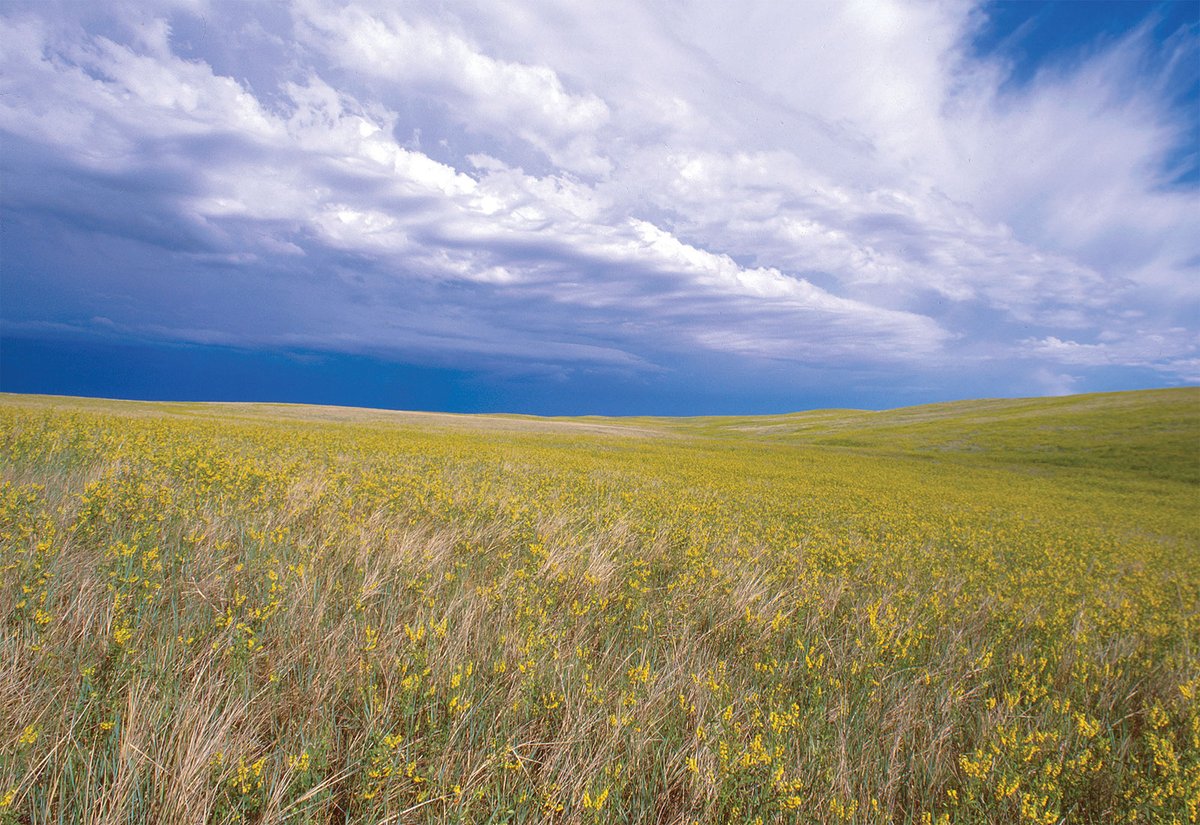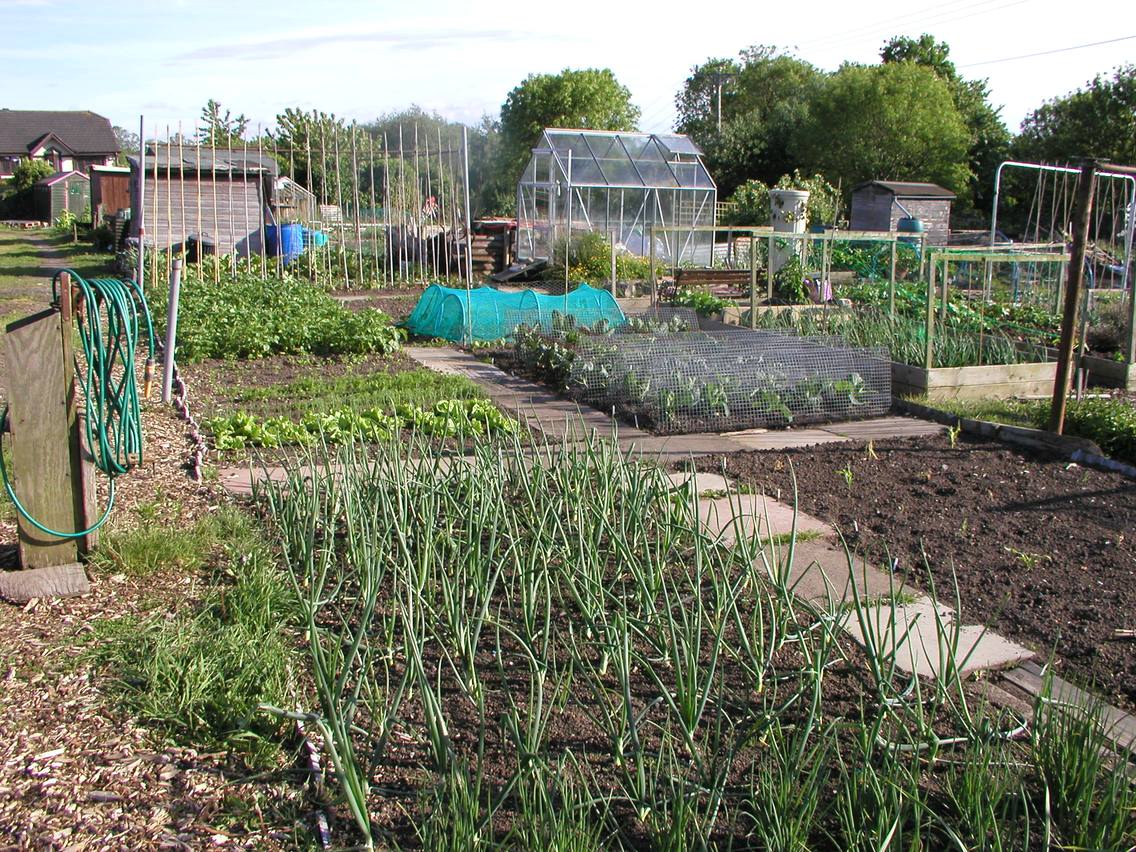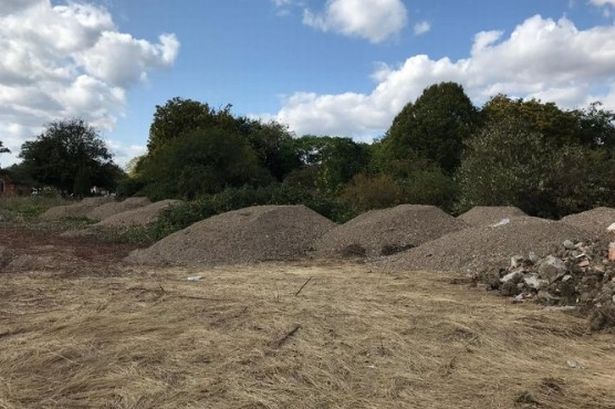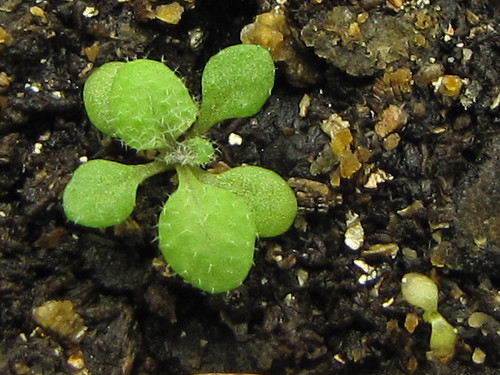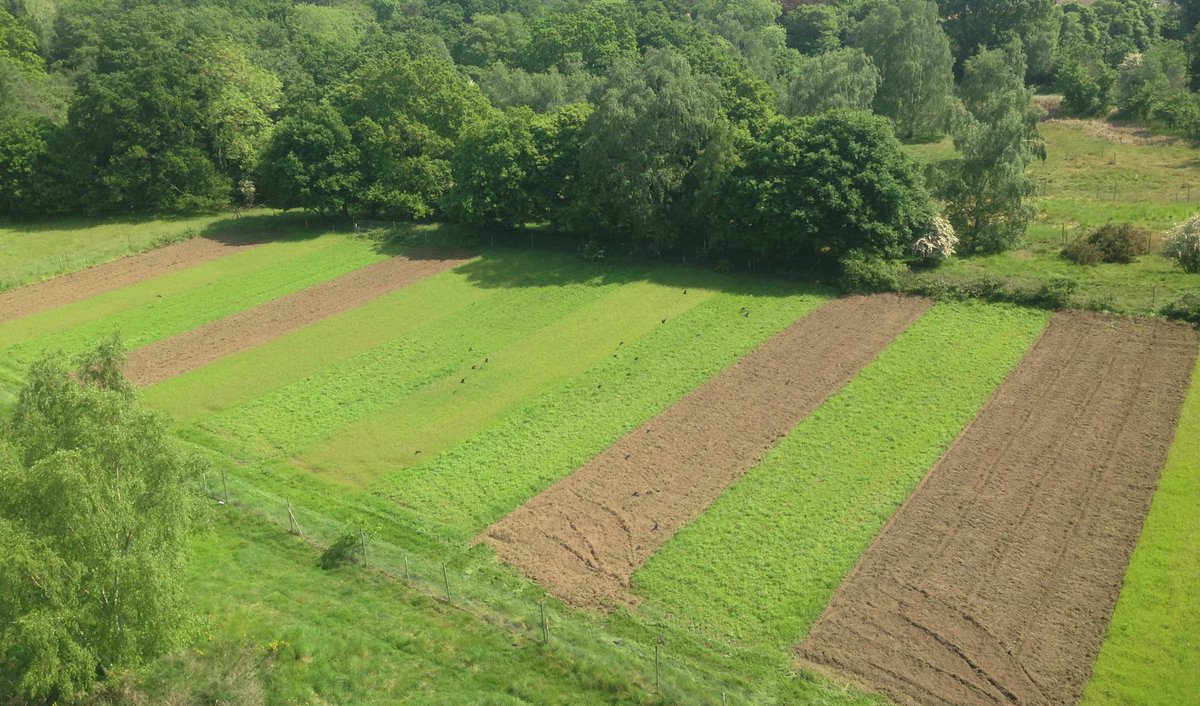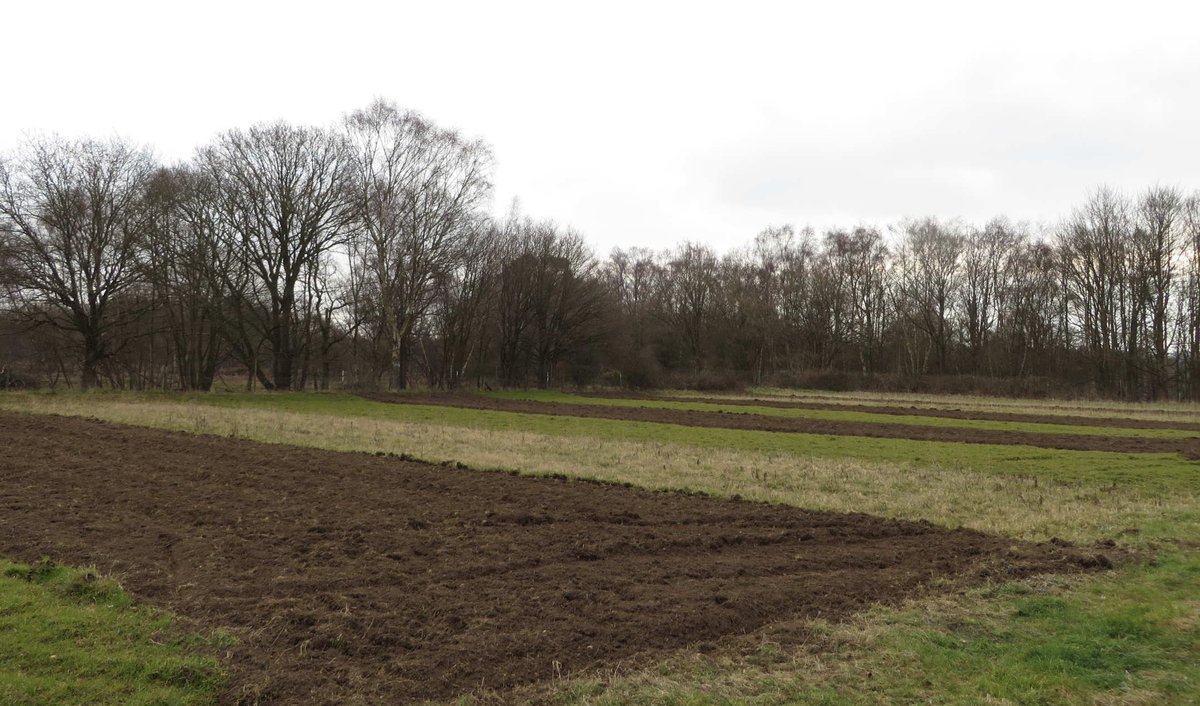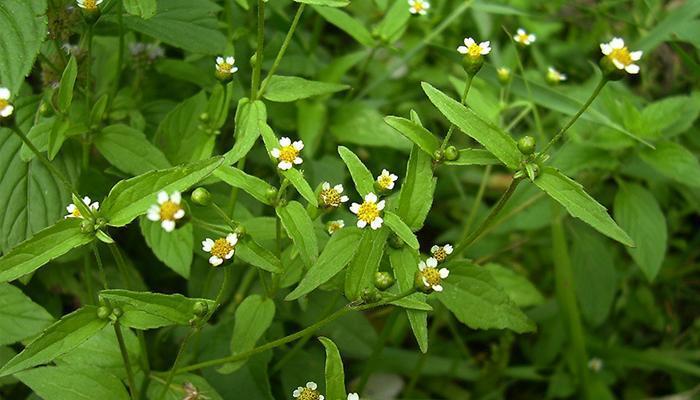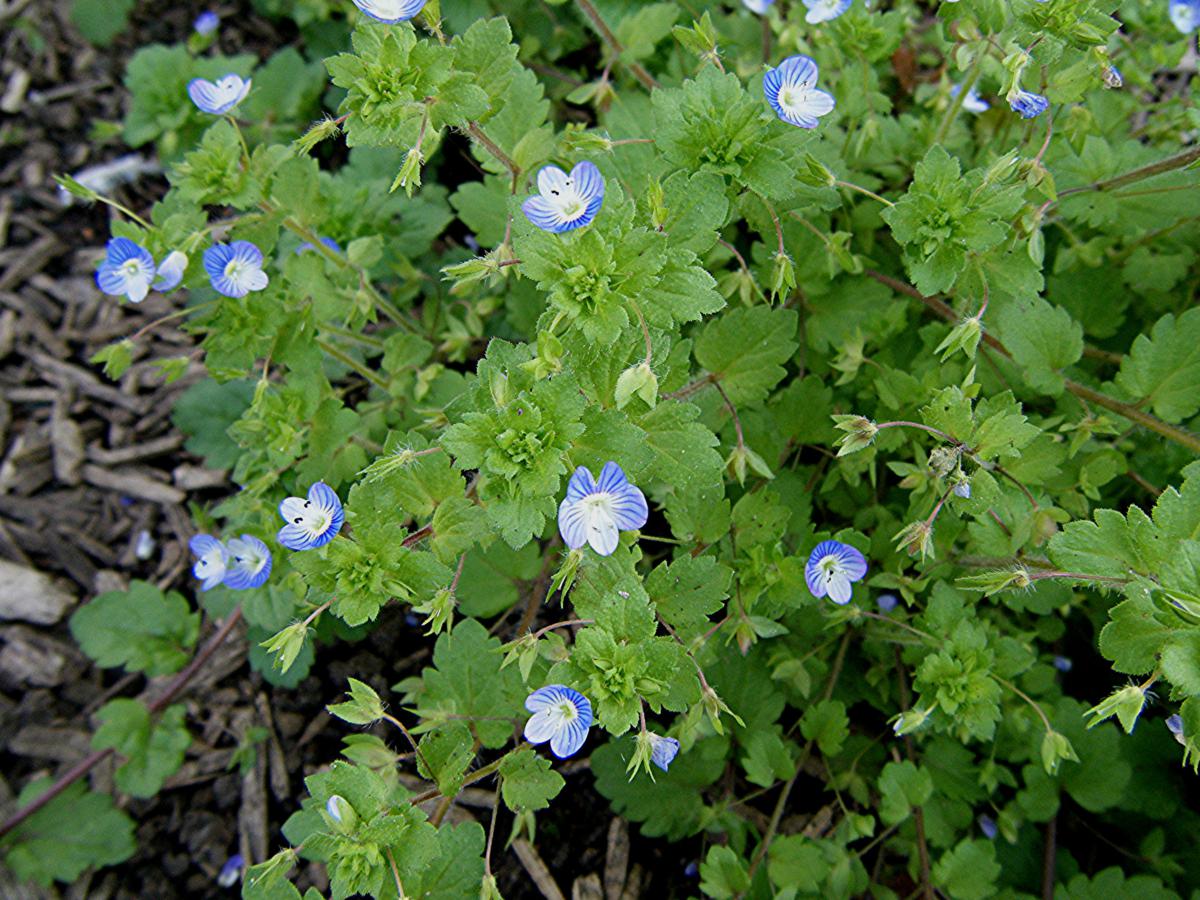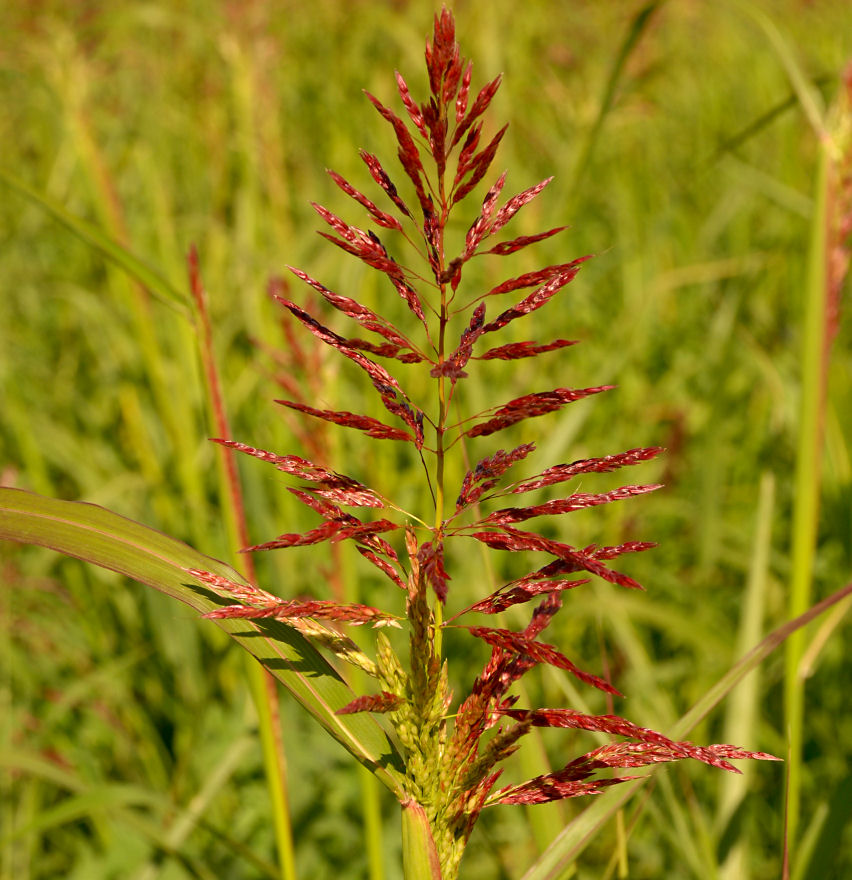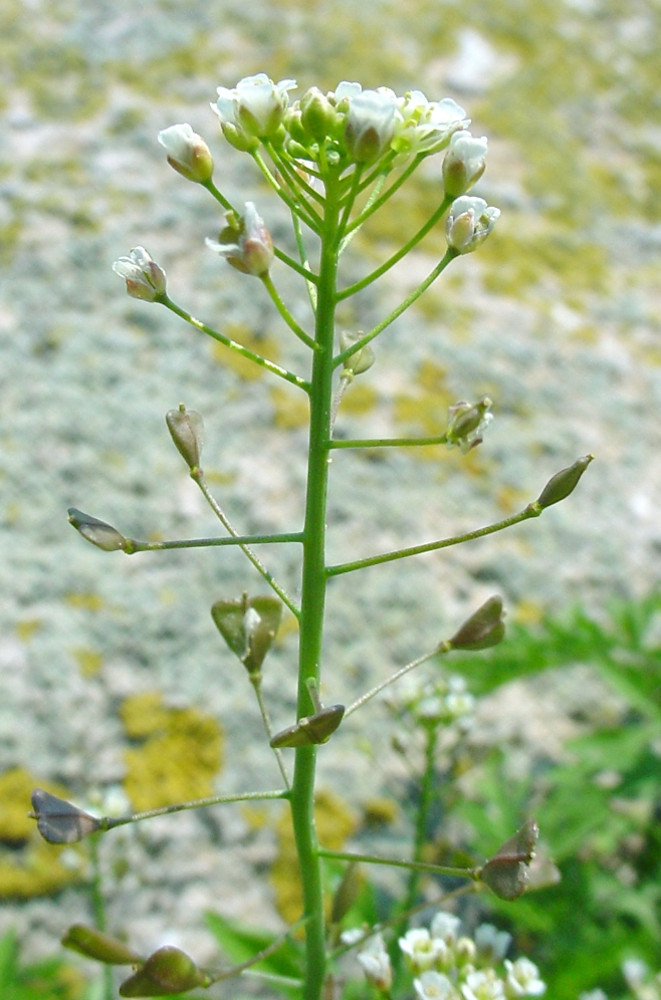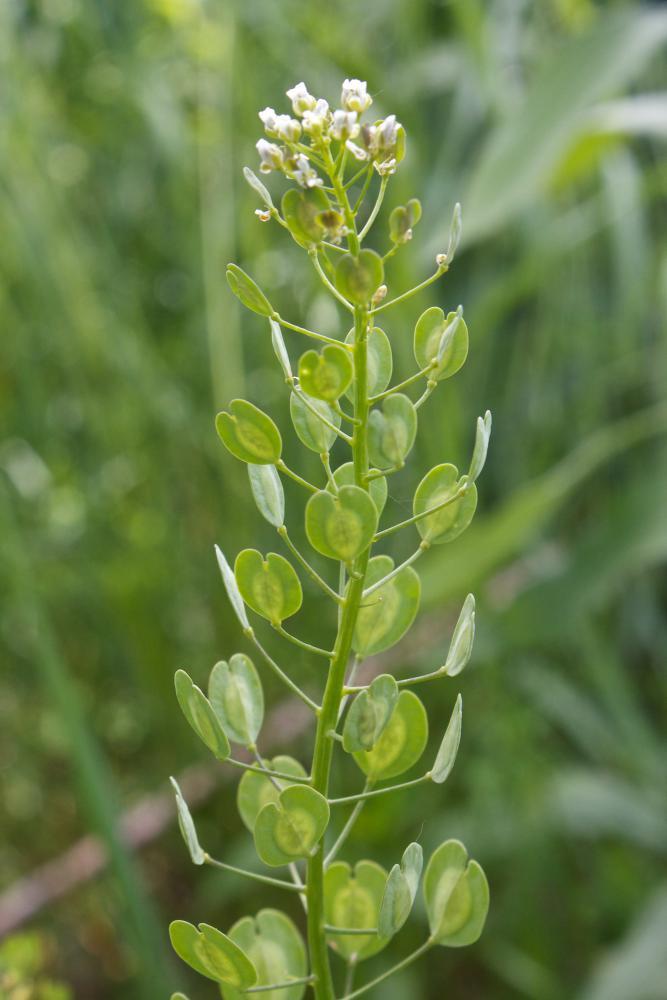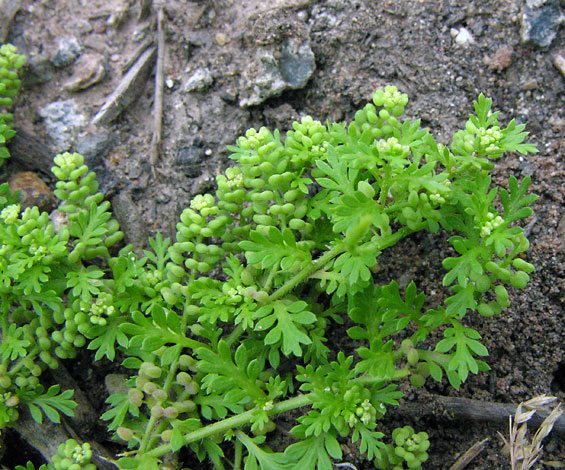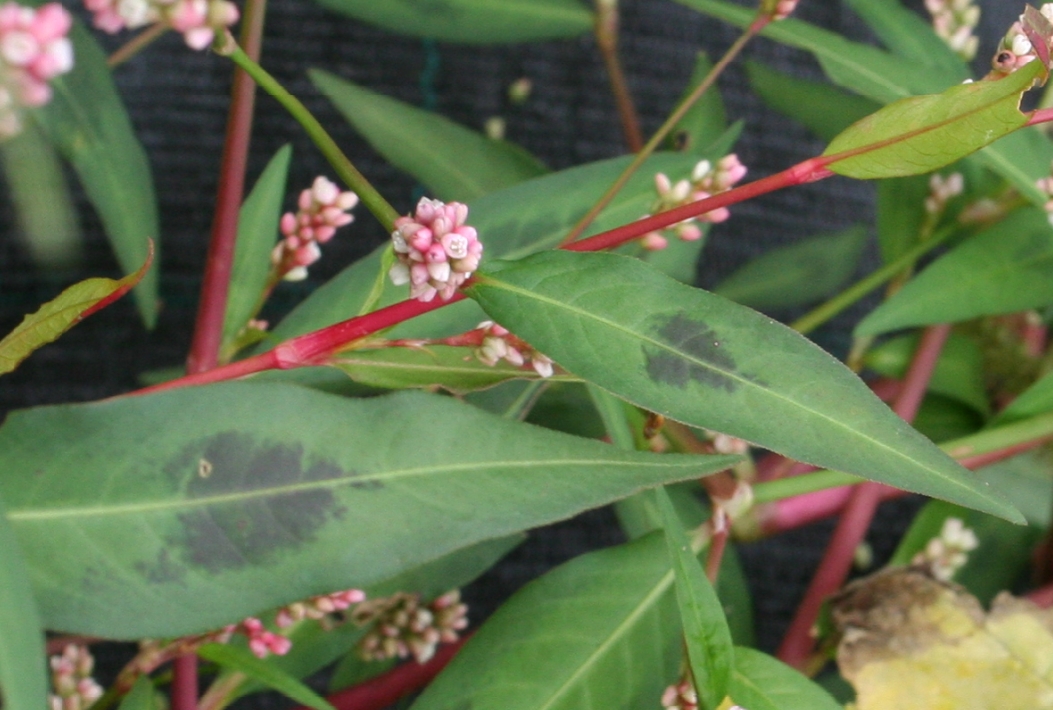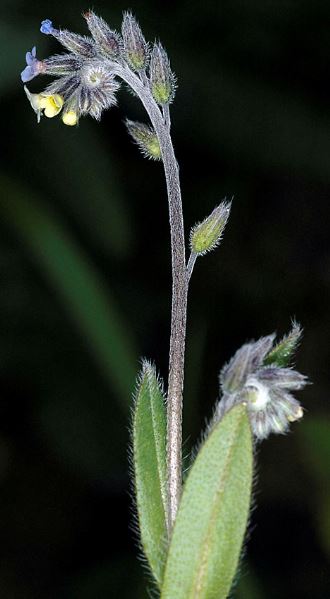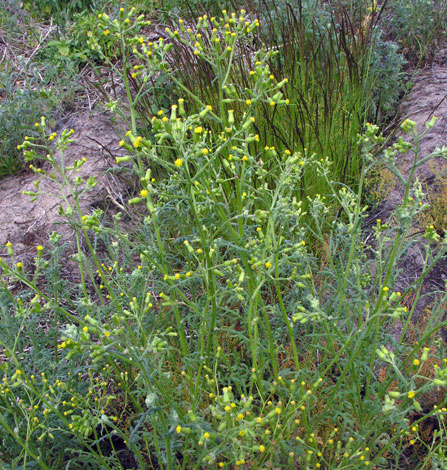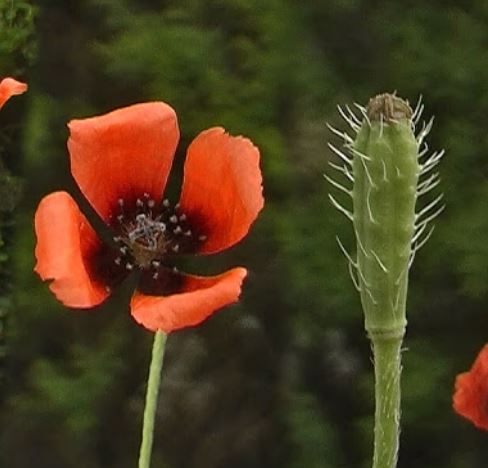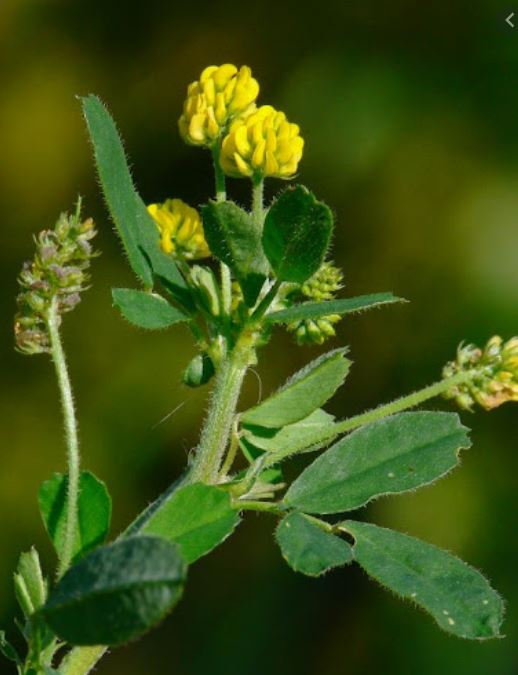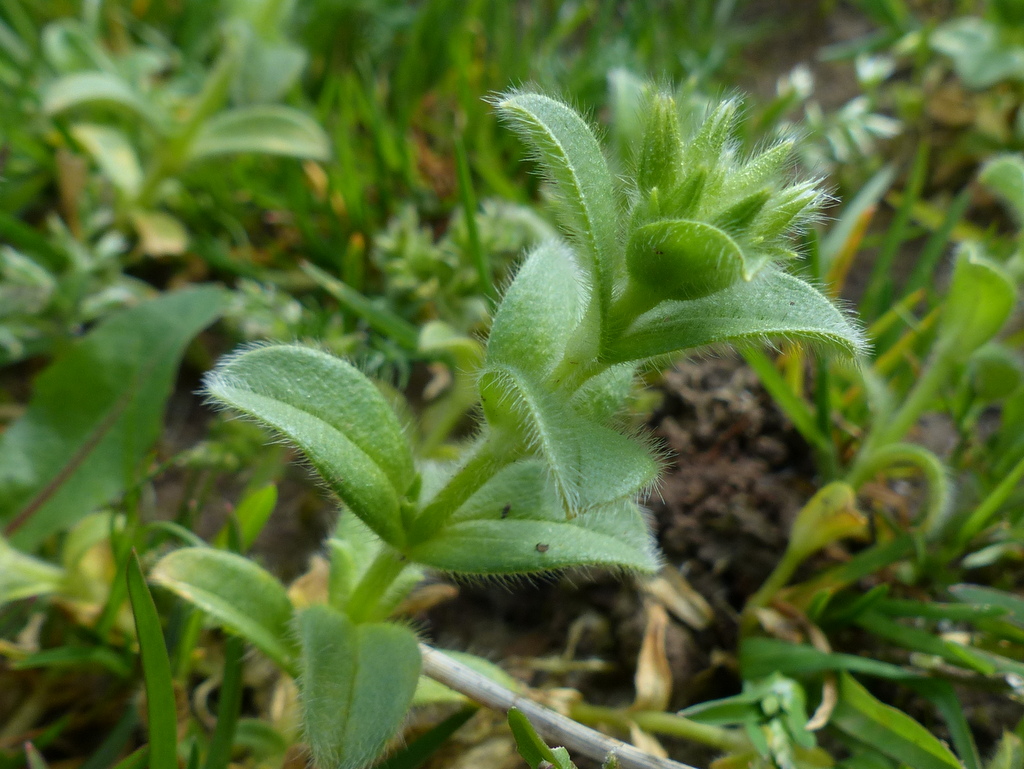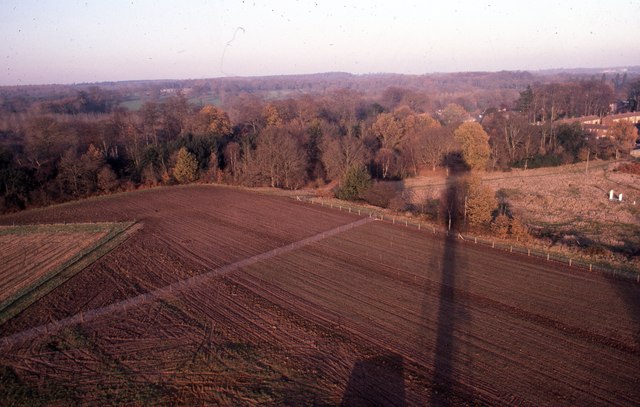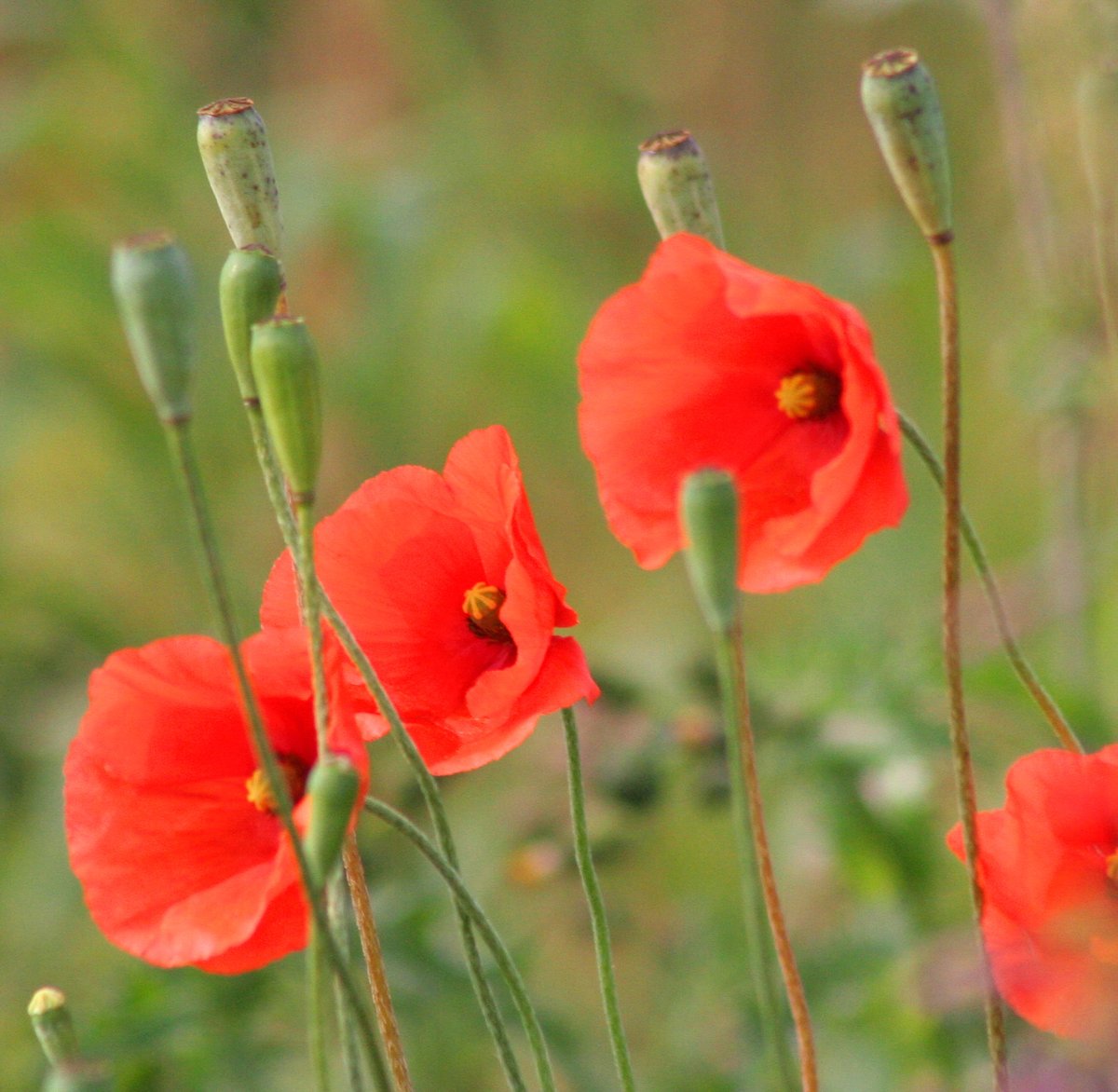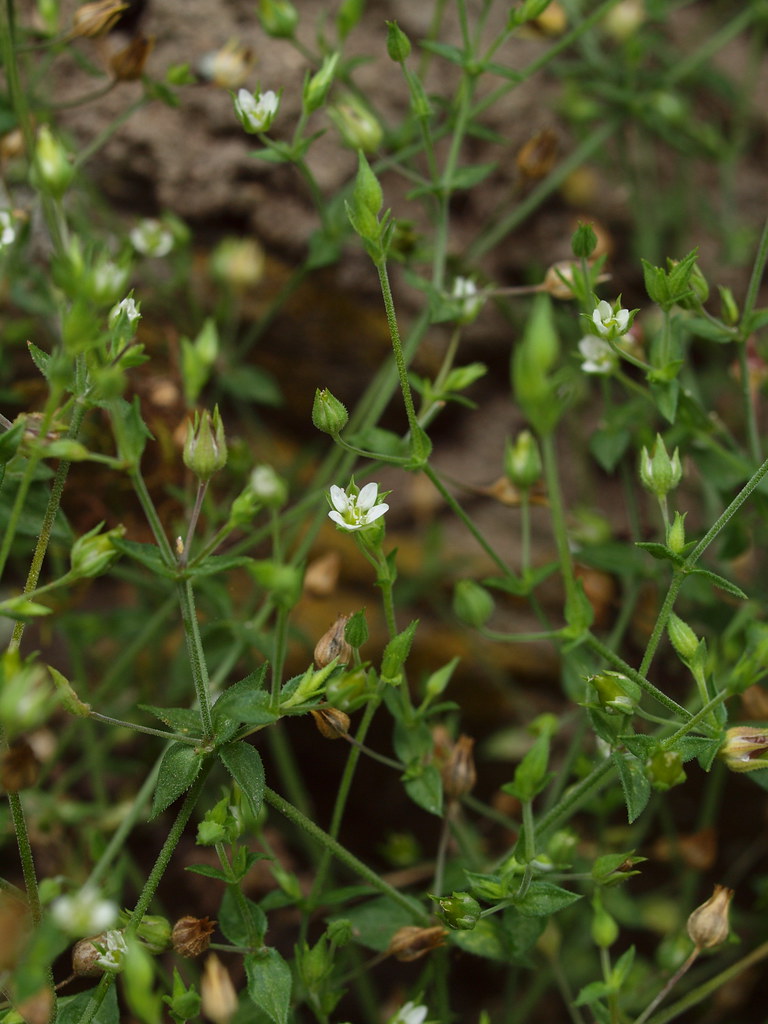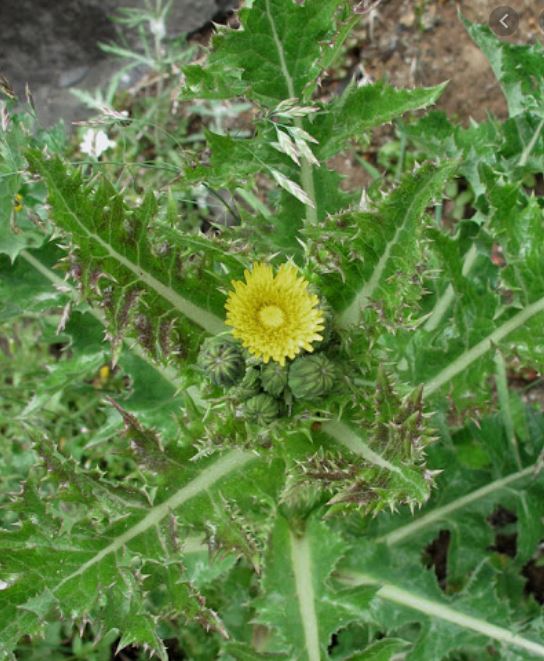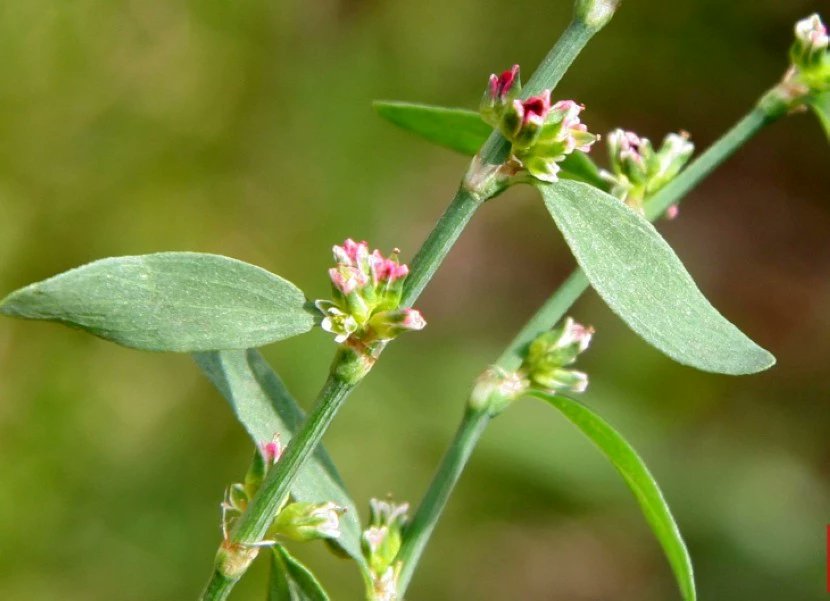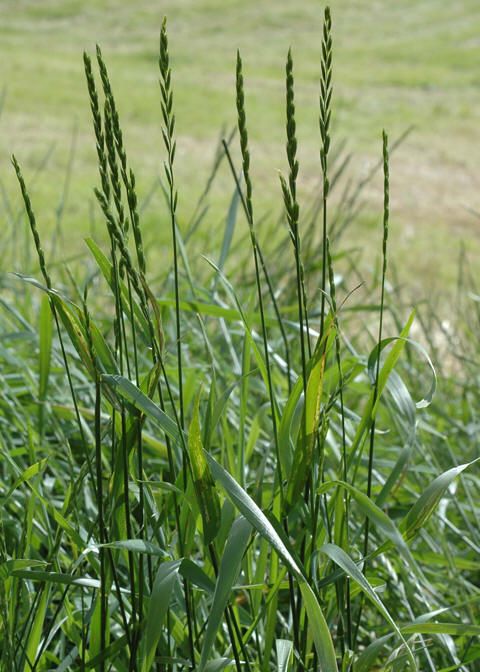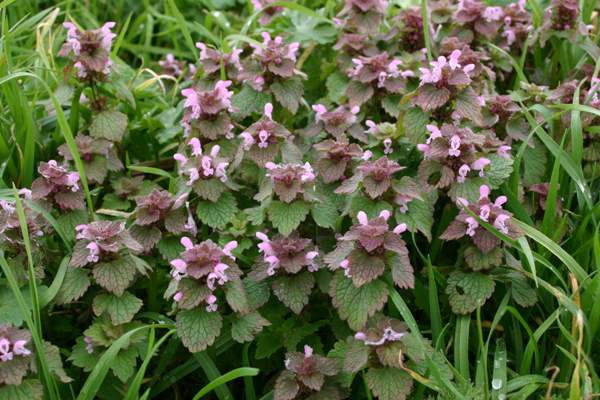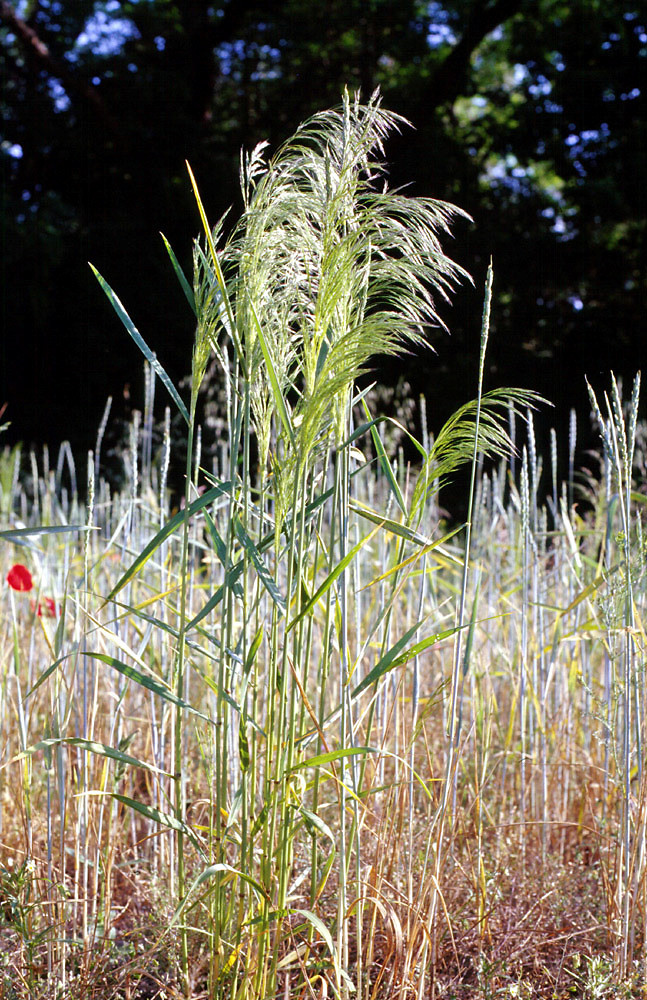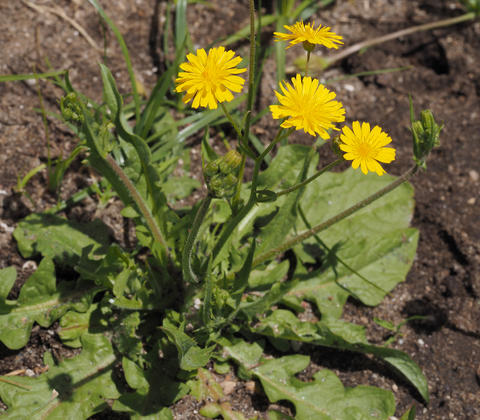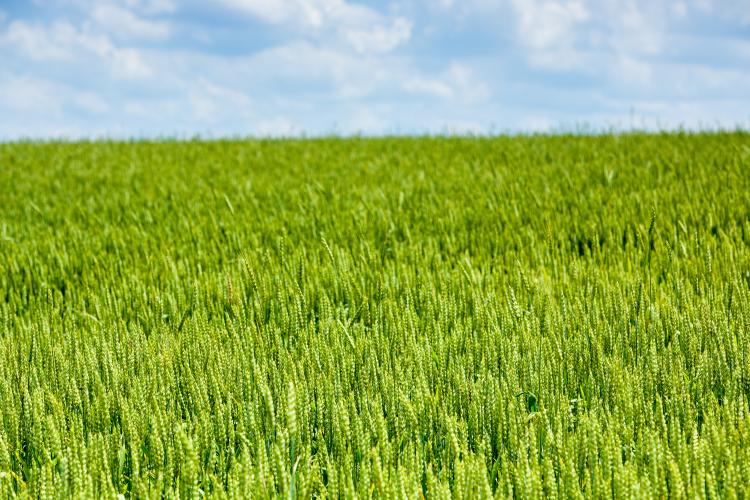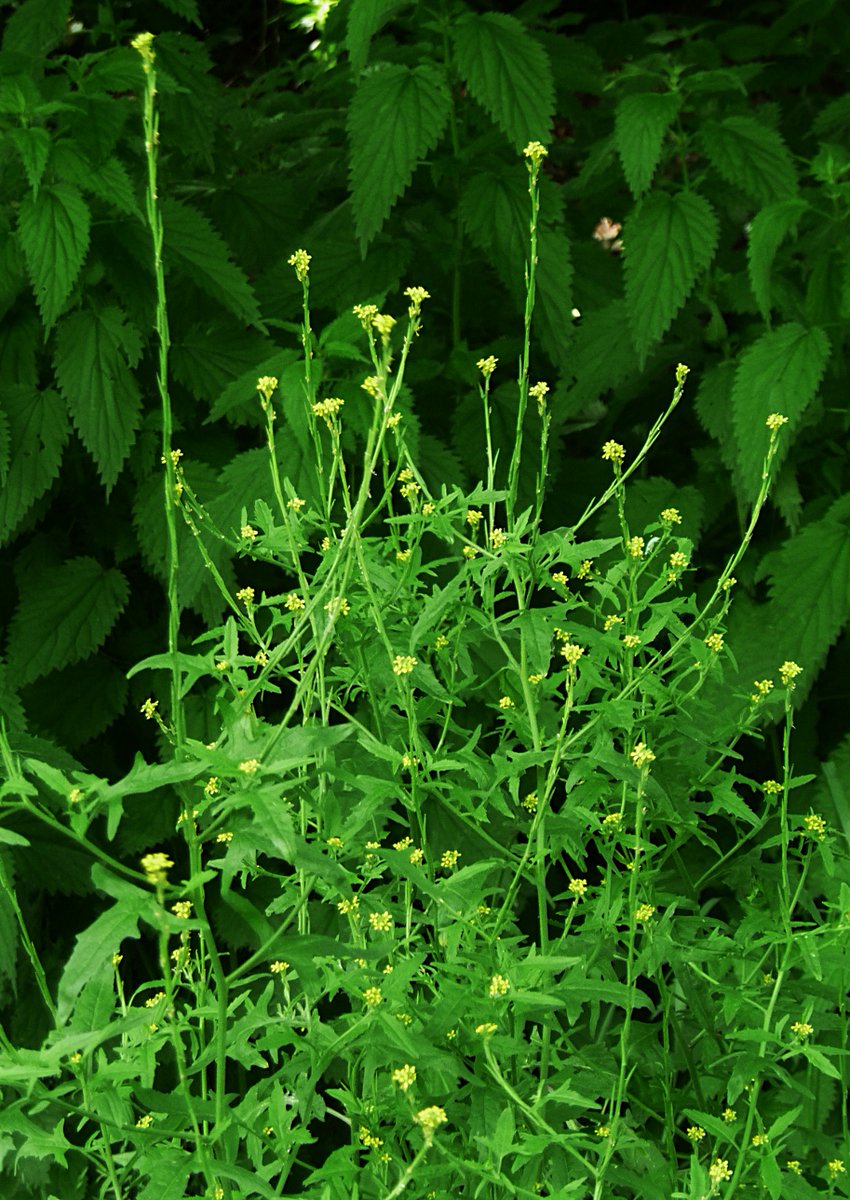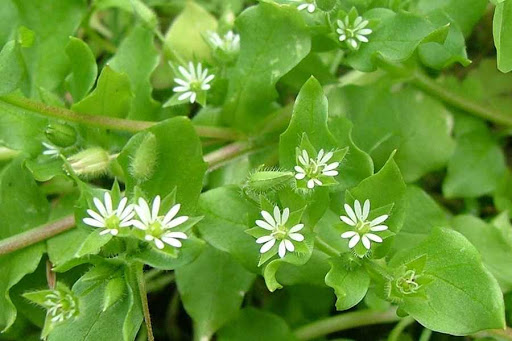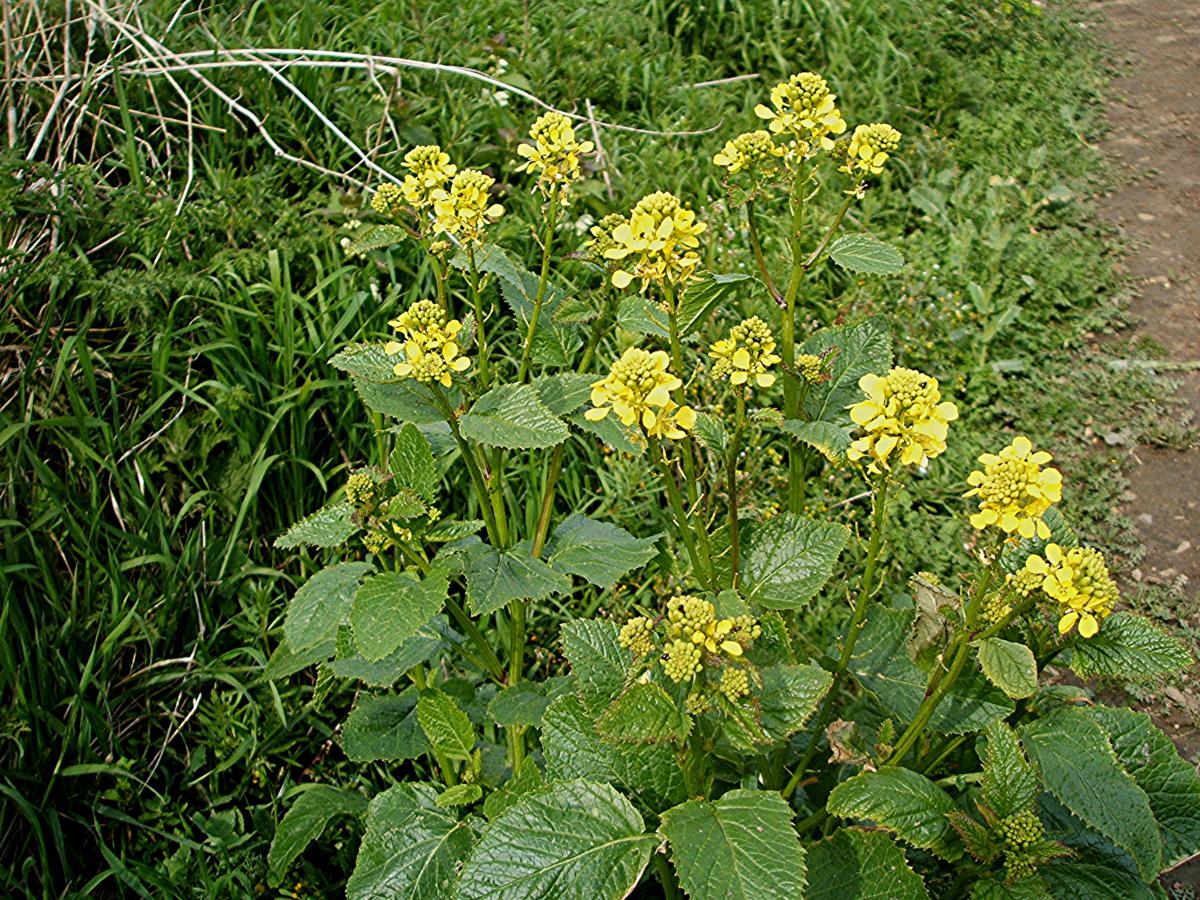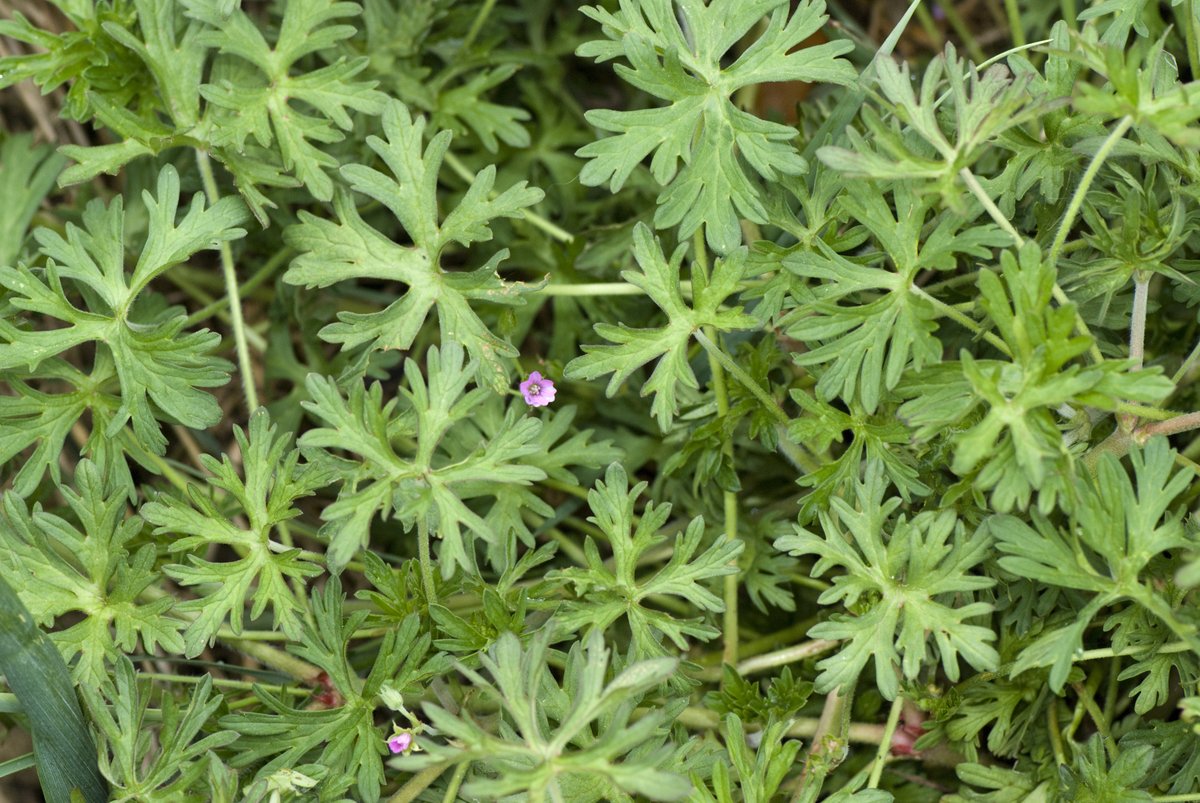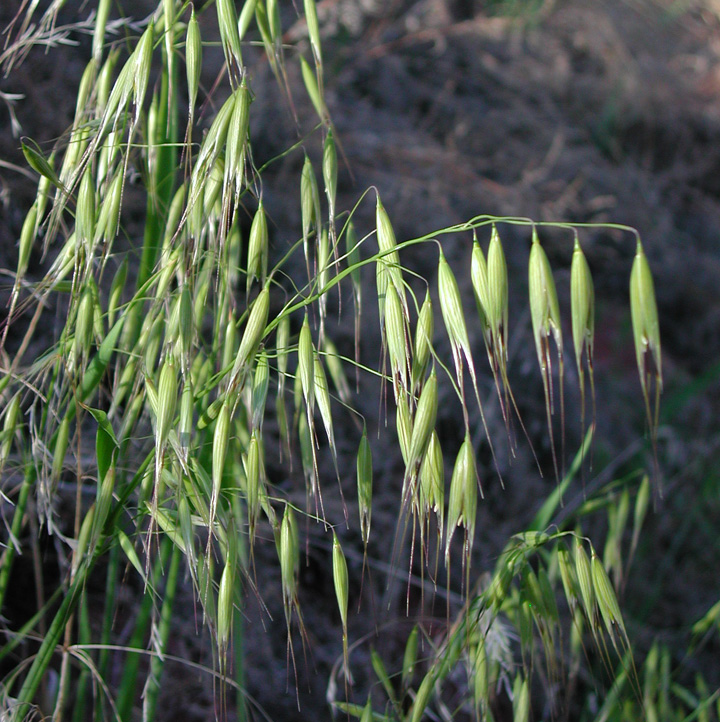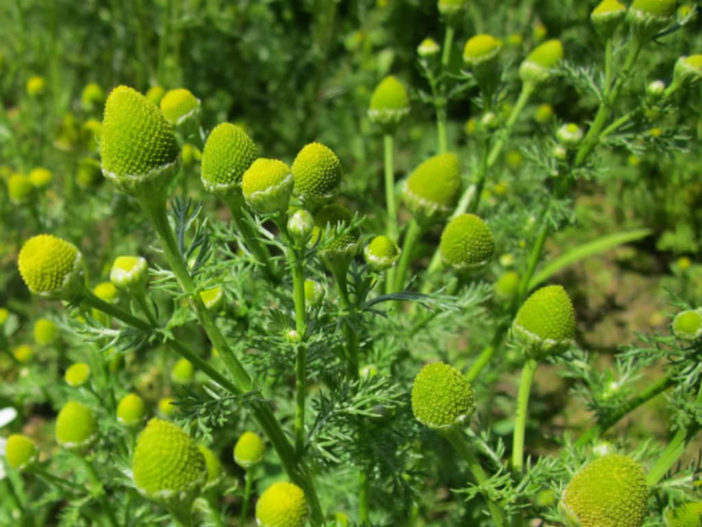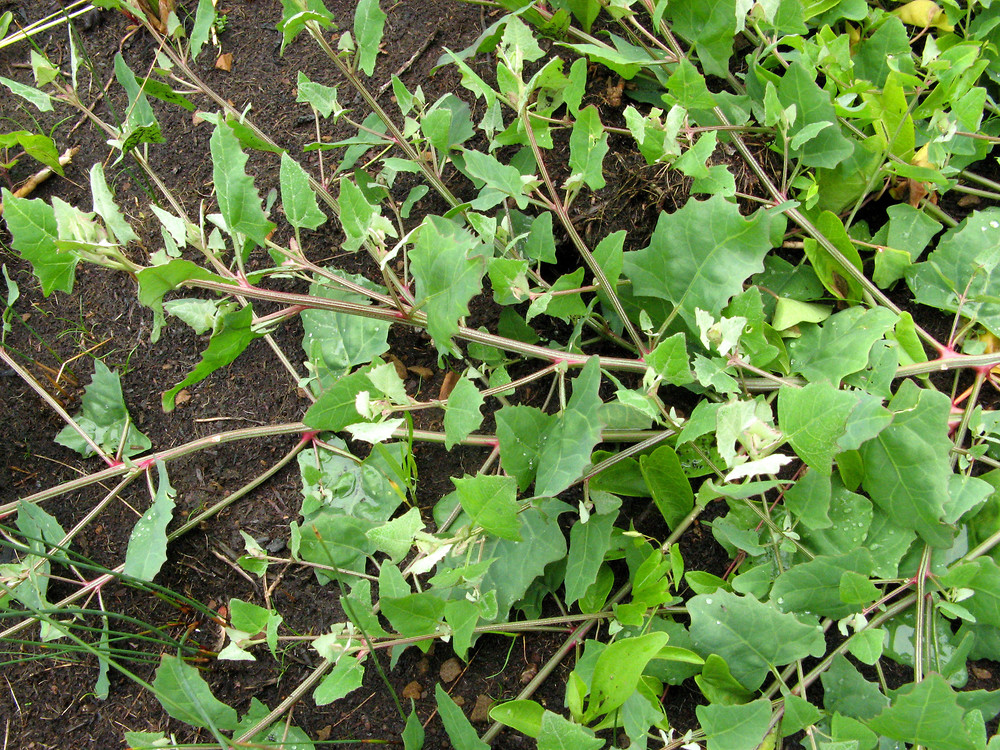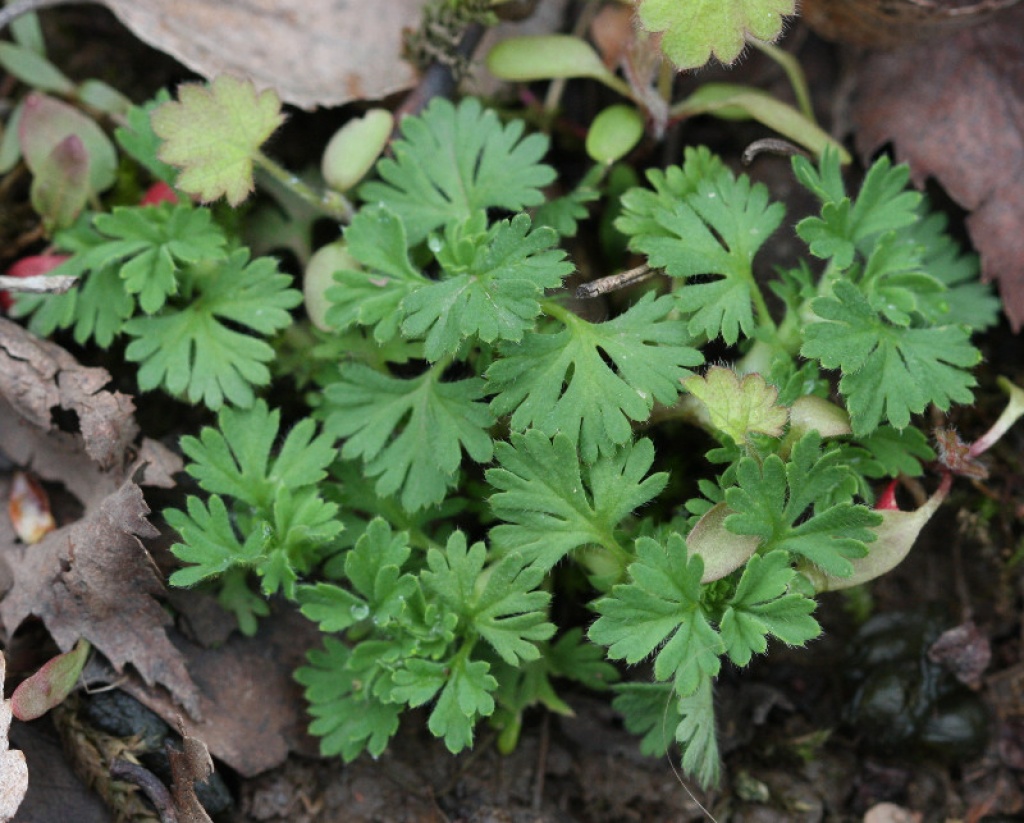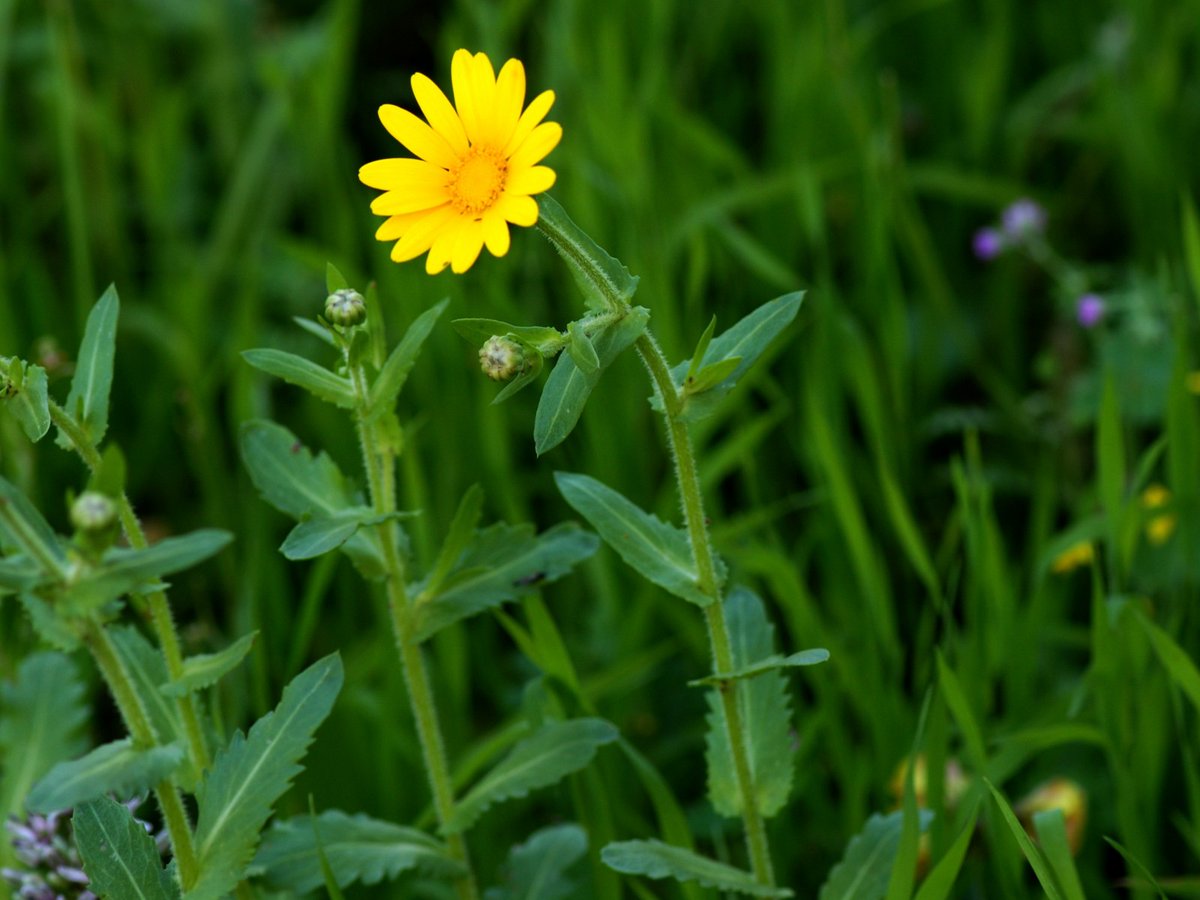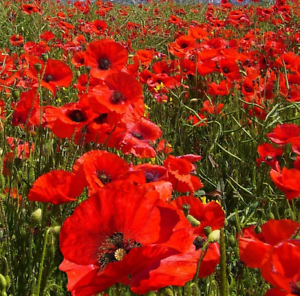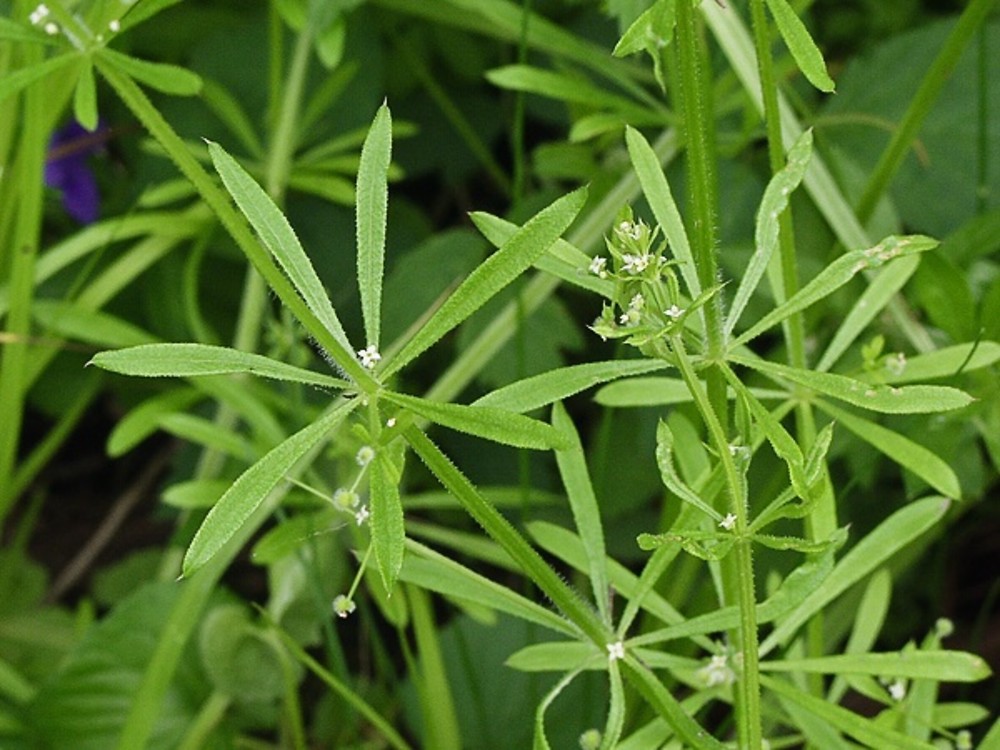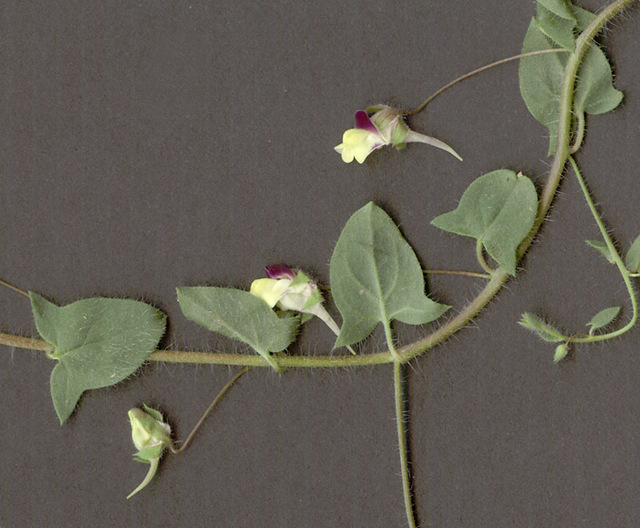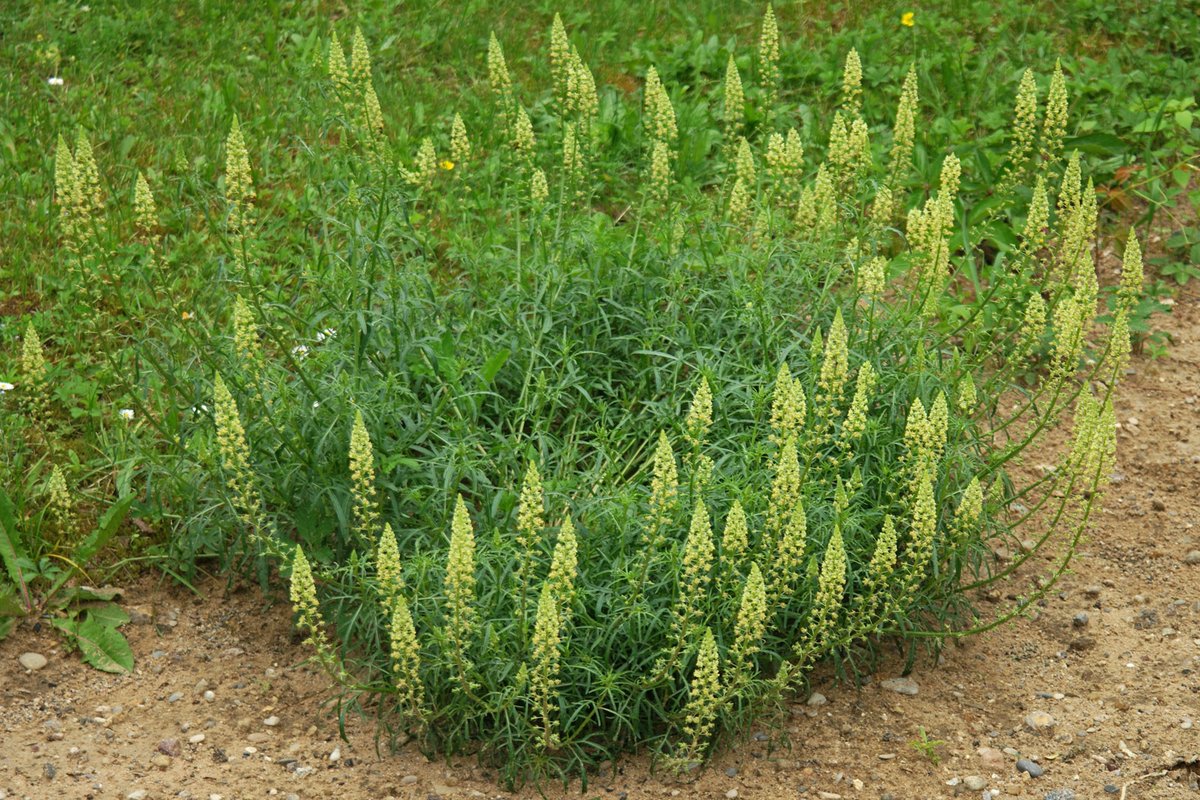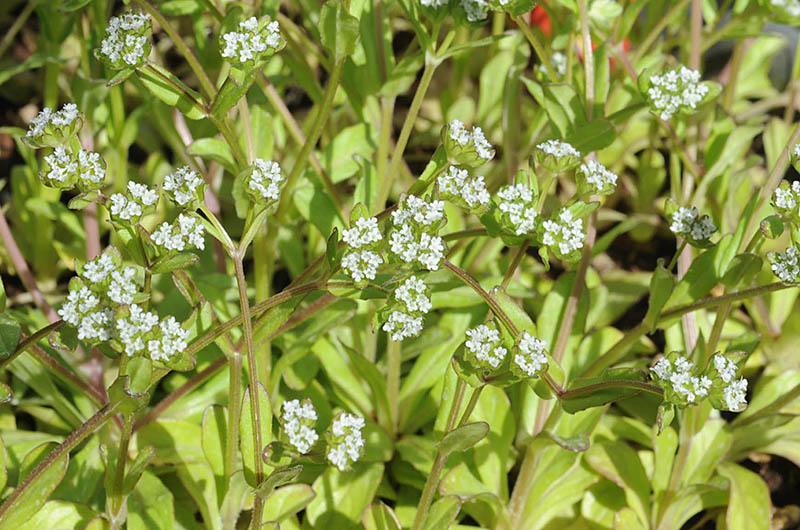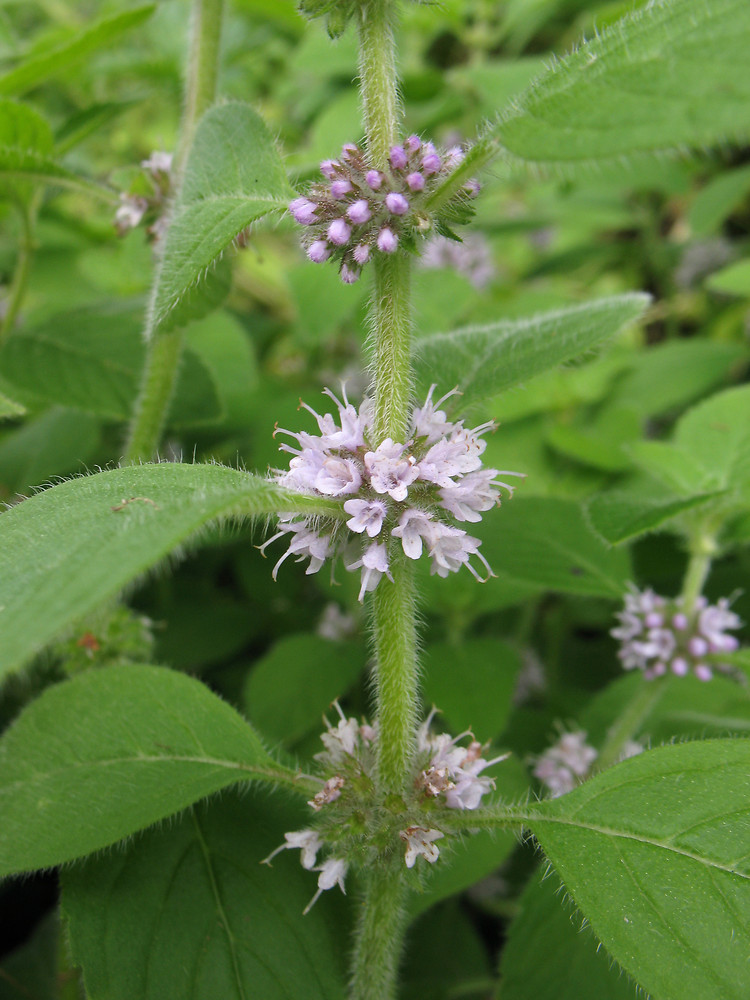The ‘seed bank’ is a plant community that spends most of the time hidden underground, suppressed from germinating by a carpet of perennial vegetation and dead organic matter.
When the vegetation and leaf litter are removed by cultivation, fire, herbicides or pig-rootling, sunlight shines down onto bare soil and stimulates germination
Closest to home, you can investigate the seed bank that presents itself as uninvited flora of your vegetable garden. The persistence of the seed bank is quantified in the old gardener’s adage: “one year’s seeding is 7 years& #39; weeding”
A good way to see the seed bank flora at different stages of development is to wander around your local allotments: different people will have dug over their plots at different times and the weeds will reflect this.
Another ideal opportunity is to find a pile of topsoil that has been dumped on your local waste ground (left), or on a new-build housing estate as it nears completion (right). You should ‘adopt-a-soil-pile’ and inspect it each week: you’ll be amazed at the species you’ll find.
Freshly disturbed soil contains seeds, in various states of dormancy, from many species. Most will be annuals that germinate, grow, flower and die within less than 12 months, (left) or biennials that spend their 1st year growing, then flower and die in their 2nd year (right)
The biggest difference in the life history of these short-lived plants is their germination timing. If they germinate in the autumn they need to have frost-hardy seedlings, but they gain an advantage because they have a higher leaf area at the start of the rapid growth phase.
If they germinate in June, there is no risk of frost for the seedlings, but the plants need to grow very quickly in order to get to flowering size before the first frosts of winter. Also, they must grow through what is typically the driest part of the year.
The following plant community descriptions are from the Pound Hill Disturbance Timing Experiment at Silwood Park in Berkshire. Three randomised treatments are replicated in 4 blocks: cultivation in May (fresh brown soil), October (darker green) or March (lighter green).
This is what the plots look like, just after cultivation in March (foreground). The bright green strips are the over-winter growth on the October-cultivated plots. The light-coloured strips are dead organic matter that has over-wintered on the plots cultivated last May
First, we look at the species growing on plots that are cultivated in May, once the risk of frost is passed. They typically start to flower in July and continue until cut down by frost in November. The species are presented in pairs, starting with the most abundant.
Erodium cicutarium (Common Stork’s-bill, Geraniaceae; left).
Chenopodium album (Fat-hen, Amaranthaceae; right)
Chenopodium album (Fat-hen, Amaranthaceae; right)
Spergula arvensis (Corn Spurrey, Caryophyllaceae; left)
Geranium molle (Dove’s-foot Crane’s-bill, Geraniaceae; right)
Geranium molle (Dove’s-foot Crane’s-bill, Geraniaceae; right)
Lamium amplexicaule (Henbit Dead-nettle, Lamiaceae; left)
Galinsoga parviflora (Gallant-soldier, Asteraceae; right)
Galinsoga parviflora (Gallant-soldier, Asteraceae; right)
Veronica persica (Common Field-speedwell, Veronicaceae; left). Agrostis gigantea (Black Bent, a perennial Poaceae; right)
Capsella bursa-pastoris (Shepherd’s-purse, Brassicaceae; left). Senecio vulgaris (Groundsel, Asteraceae; right)
Thlaspi arvense (Field Penny-cress, Brassicaceae; left)
Lepidium didymum (Lesser Swine-cress, Brassicaceae; right)
Lepidium didymum (Lesser Swine-cress, Brassicaceae; right)
Persicaria maculosa (Redshank, Polygonaceae; left)
Myosotis discolor (Changing Forget-me-not, Boraginaceae; right)
Myosotis discolor (Changing Forget-me-not, Boraginaceae; right)
Senecio sylvaticus (Heath Groundsel, Asteraceae; left)
Poa annua (Annual Meadow-grass, Poaceae; right)
Poa annua (Annual Meadow-grass, Poaceae; right)
Roemeria argemone (Prickly Poppy, Papaveraceae; left)
Solanum nigrum (Black Nightshade, Solanaceae, right)
Solanum nigrum (Black Nightshade, Solanaceae, right)
Medicago lupulina (Black Medick, Fabaceae; left)
Cerastium glomeratum (Sticky Mouse-ear, Caryophyllaceae; right)
Cerastium glomeratum (Sticky Mouse-ear, Caryophyllaceae; right)
Now marvel at how different the species list following October cultivation is, bearing in mind that the two communities came from exactly the same seed bank at the start of the experiment in 1990.
Anisantha sterilis (Barren Brome, Poaceae; left)
Tripleurospermum inodorum (Scentless Mayweed, Asteraceae; right)
Tripleurospermum inodorum (Scentless Mayweed, Asteraceae; right)
Bromus hordeaceus (Sort-brome, Poaceae; left)
Papaver dubium (Long-headed Poppy, Papaveraceae; right)
Papaver dubium (Long-headed Poppy, Papaveraceae; right)
Arabidopsis thaliana (Thale Cress, Brassicaceae; left)
Raphanus raphanistrum subsp. raphanistrum (Wild Radish, Brassicaceae; right)
Raphanus raphanistrum subsp. raphanistrum (Wild Radish, Brassicaceae; right)
Myosotis arvensis (Field Forget-me-not, Boraginaceae; left)
Arenaria leptoclados (Slender Sandwort, Caryophyllaceae; right)
Arenaria leptoclados (Slender Sandwort, Caryophyllaceae; right)
Fallopia convolvulus (Black-bindweed, Polygonaceae; left)
Lycopsis arvensis (Bugloss, Boraginaceae; right)
Lycopsis arvensis (Bugloss, Boraginaceae; right)
Viola arvensis (Field Pansy, Violaceae; left)
Matricaria chamomilla (Scented Mayweed, Asteraceae; right)
Matricaria chamomilla (Scented Mayweed, Asteraceae; right)
Veronica arvensis (Wall Speedwell, Veronicaceae; left)
Lysimachia arvensis (Scarlet Pimpernel, Primulaceae; right)
Lysimachia arvensis (Scarlet Pimpernel, Primulaceae; right)
Vulpia myuros (Rat’s-tail Fescue, Poaceae; left)
Lamium purpureum (Red Dead-nettle, Lamiaceae; right)
Lamium purpureum (Red Dead-nettle, Lamiaceae; right)
Finally, what is surely the most beautiful of all the weedy annual grasses: Apera spica-venti (Loose Silky-bent, Poaceae; left). Crepis capillaris (Smooth Hawk’s-beard, Asteraceae; right)
These Silwood soils are acid and sandy. The seed bank is different on chalk soils and on clays.
The seed bank species you find also depends on the crop being grown. In arable fields, different herbicides are used on cereals and dicots: these select for grass weeds in wheat fields, and for cruciferous weeds in oilseed rape fields.
In order of abundance, these are the seed-bank weeds on clay soils.
Alopecurus myosuroides (Black-grass, Poaceae, in wheat; left). Sisymbrium officinale (Hedge Mustard, Brassicaceae, in oilseed rape; right)
Alopecurus myosuroides (Black-grass, Poaceae, in wheat; left). Sisymbrium officinale (Hedge Mustard, Brassicaceae, in oilseed rape; right)
Stellaria media (Common Chickweed, Caryophyllaceae; left)
Sinapis arvensis (Charlock, Brassicaceae; right)
Sinapis arvensis (Charlock, Brassicaceae; right)
Geranium dissectum (Cut-leaved Crane’s-bill, Geraniaceae; left)
Avena fatua (Wild-oat, Poaceae; right)
Avena fatua (Wild-oat, Poaceae; right)
Euphorbia helioscopia (Sun Spurge, Euphorbiaceae; left).
Lepidium coronopus (Swine-cress, Brassicaceae; right) is very common in oilseed rape fields because of its immunity to the selective herbicides.
Lepidium coronopus (Swine-cress, Brassicaceae; right) is very common in oilseed rape fields because of its immunity to the selective herbicides.
Stachys arvensis (Field Woundwort, Lamiaceae; left)
Matricaria discoidea (Pineappleweed, Asteraceae; right)
Matricaria discoidea (Pineappleweed, Asteraceae; right)
Atriplex prostrata (Spear-leaved Orache, Amaranthaceae; left). Aphanes arvensis (Parsley-piert, Rosaceae; right)
The seed-bank weeds on chalk soils are highly distinctive. Papaver rhoeas (Corn Poppy, Papaveraceae; left). Fumaria officinalis (Common Fumitory, Papaveraceae; right). Take care with ID, as there are lots of species.
Galium aparine (Cleavers, Rubiaceae; left). Be aware (x10) that there is a very rare Corn Cleavers (G. tricornutum) with papillose fruits (not with hooked bristles). Aethusa cynapium (Fool’s Parsley, Apiaceae; right)
Kickxia spuria (Round-leaved Fluellen, Veronicaceae; left). Kickxia elatine (Sharp-leaved Fluellen, Veronicaceae; right)
Reseda lutea (Wild Mignonette, Resedaceae; left). Valerianella carinata (Keel-fruited Cornsalad, Valerianaceae; right)
Silene latifolia subsp. alba (White Campion, Caryophyllaceae; left). Mentha arvensis (Corn Mint, Lamiaceae; right).
A top tip if you are out botanizing for annual plants is to carry a zip-lock poly bag with you. If your plant is too young to identify, carefully uproot it (after obtaining the permission of the landowner, of course), bag it, and grow it on, having potted it up at home.

 Read on Twitter
Read on Twitter